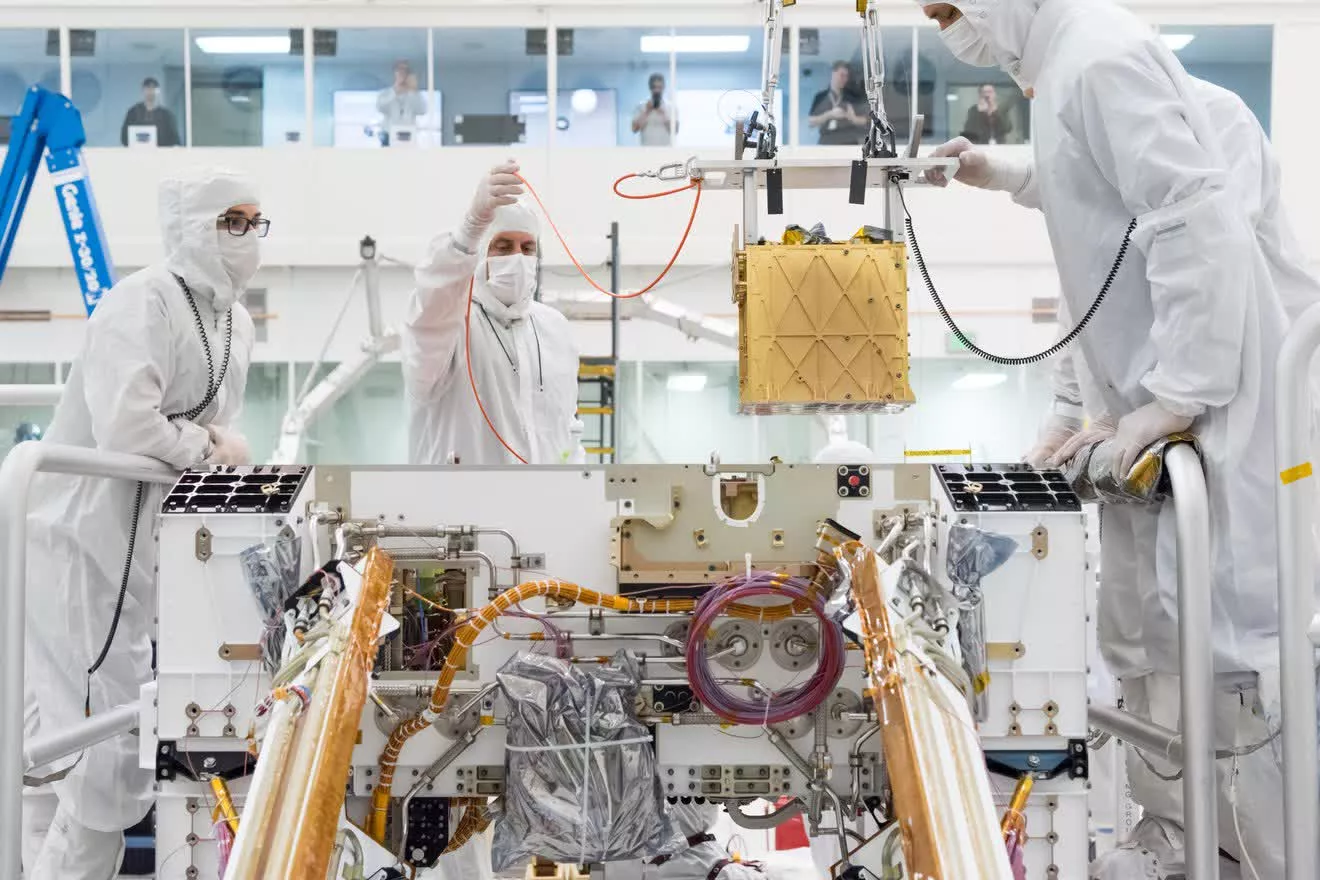
Putting boots on Mars is fraught with many challenges. Astronauts will need shelter from deadly radiation, food, water, and most importantly air to breathe. NASA is taking all of this one step at a time and has now announced a groundbreaking achievement: generating a sizable amount of oxygen from Mars’ paper-thin atmosphere.
As they take their inaugural breaths on the Red Planet, the first Martian astronauts might owe a debt of gratitude to a device no bigger than your microwave oven. This device, known as MOXIE (Mars Oxygen In-Situ Resource Utilization Experiment), has just wrapped up its 16th and final oxygen generation session aboard NASA’s Perseverance rover. And it’s exceeded all expectations set by its creators at MIT.
“Thanks to MOXIE’s stellar performance, we now know that extracting oxygen from Mars’ atmosphere is not just a dream—it’s a reality,” says NASA Deputy Administrator Pam Melroy. “Such technologies are pivotal. They pave the way for a sustainable lunar presence, bolster lunar economies, and set the stage for our first human journey to Mars.”
Breathing on Mars
Since its deployment, MOXIE has produced a total of 122 grams of oxygen. To put that into perspective, it’s roughly the amount a small dog would breathe in 10 hours. Impressively, at its peak efficiency, MOXIE churned out 12 grams of oxygen per hour, more than double NASA’s initial goals.
Mars’ atmosphere is only 1% as thick as Earth’s. Their composition is also significantly different. While our atmosphere is rich in nitrogen (78%) and oxygen (21%), with only trace amounts of carbon dioxide, Mars’ atmosphere is mainly made of carbon dioxide (96%). Oxygen comprises only 0.31% of the Martian atmosphere.
MOXIE doesn’t extract oxygen from the atmosphere because that would be futile considering its low amount. Instead, it employs an electrochemical process, stripping one oxygen atom from each carbon dioxide molecule from Mars’ thin but carbon-rich atmosphere. The output is carbon monoxide and oxygen.
“By proving this technology in real-world conditions, we’ve come one step closer to a future in which astronauts ‘live off the land’ on the Red Planet,” said Trudy Kortes, director of technology demonstrations, Space Technology Mission Directorate (STMD) at NASA Headquarters in Washington.
This is the first real-world test of a technology that could support human life on Mars — but also help astronauts leave when the time comes. You see, the most crucial need in order to make the journey home is the production of rocket propellant in vast quantities.
The bigger picture
In order to burn fuel, you need oxygen to kick off the chemical reaction. Oxygen weighs several times more than the fuel it burns, which is not a problem on Earth where it is found in ample quantities. To come back home from Mars, a small crew of astronauts would need oxygen weighing as much as a large truck.
To produce this amount of oxygen, you’d need a power plant churning out 25,000 to 30,000 watts. In comparison, the Perseverance rover’s power system puts out just 100 watts. So, while MOXIE can produce some oxygen, we’d need a much larger version, let’s call it “Big MOXIE”, to generate the vast amounts required for a Mars launch.
The next phase isn’t merely about creating a bigger, better MOXIE. The focus will shift to developing a full-scale system, complete with an oxygen generator and storage facilities for liquid oxygen. But Michael Hecht, project lead for MOXI and an engineer at MIT, hopes to see a variety of technologies tested on Mars. “There are many technologies awaiting their turn,” he says. “I’m thrilled MOXIE led the way.”






